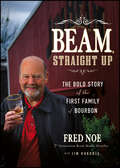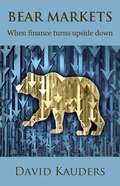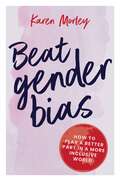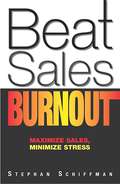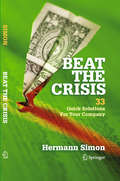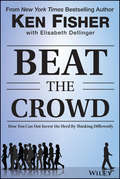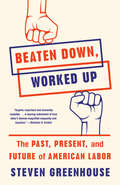- Table View
- List View
Beacon Group of Hong Kong: Finding Light in the Shadow Education Industry
by Christopher Marquis Qi Li Guy LeungAfter more than 25 years of operation, Beacon Group had grown from having 3 small classrooms on the fourth floor of a commercial building, to a network of 21 centers across Hong Kong with over 60,000 students enrolled per year. The key long-term challenge for the industry was that due to low birth rates in Hong Kong, over the next decade there will be a precipitous decline in the number of senior secondary school students, who account for the lion's share of market demand for tutorial services as they prepare for the Hong Kong university entrance exam. Given this impending demographic shift, Beacon Group needed to find new sources of demand for their services. Options included expanding into Mainland China, establishing new on-line offerings to lower costs and further to introduce new products and services to appeal to a more diverse set of students. In addition to this core challenge, the case provides opportunities to discuss the following topics: how a family business can scale in the face of numerous challenges, and how leaders can design creative incentive systems to attract and retain key professional talent.
Beacon to the World: A History of Lincoln Center
by Joseph W PolisiA comprehensive history of the creation and growth of Lincoln Center, exploring the interconnections between politicians, financiers, and performing artists In this comprehensive history of Lincoln Center for the Performing Arts, longtime Juilliard president Joseph Polisi guides us through the complex convergence of the worlds of politics, finance, and the performing arts throughout the years of the Center’s history, including the roles played by Robert Moses, John D. Rockefeller 3rd, Leonard Bernstein, William Schuman, Elia Kazan, Joseph Papp, Alice Tully, Beverly Sills, and many others. Polisi’s book explores the social and political environment during the Center’s history, reflecting the growth and evolution of the performing arts in America from its post–World War II roots to the present day of global interaction. The history of the birth and growth of this unique institution is a story of determination, economic acumen, political machinations, artistic innovations, and above all the strong belief that the arts are at the center of the fabric of American society and that they should be supported and embraced by all citizens.
Beam Dental (A)
by Rembrand Koning Alicia DadlaniIn May 2014, Alex Frommeyer, cofounder and CEO of Kentucky-based Beam Dental, a seed-stage startup that developed connected toothbrushes that tracked brushing habits, needed to decide which strategy to pitch to a venture capital firm. The first pitch deck played to the founders' strengths as engineers and requested funds to develop a market-leading, next-generation connected toothbrush. The second pitch deck requested capital to start a dental insurance company, an industry in which the founders had limited knowledge, that would distribute the toothbrush and offer premium credits for healthy brushing habits. This case is the first case in a two-part series (second case 723-356), and there are two supplements (723-374 and 723-375) for this case.
Beam Dental (A): Pitch Deck Supplement 1
by Rembrand Koning Alicia DadlaniEarly pitch deck (one of two). This case is a supplement to Beam Dental (A) 723-355.
Beam Dental (A): Pitch Deck Supplement 2
by Rembrand Koning Alicia DadlaniEarly pitch deck (two of two). This case is a supplement to Beam Dental (A) 723-355.
Beam Dental (B)
by Rembrand Koning Alicia DadlaniIn May 2016, venture-backed Beam Dental was on the brink of financial collapse. Cofounder and CEO Alex Frommeyer weighed the unattractive terms of a bridge loan offered by Beam's largest investor. Frommeyer needed to decide whether to accept the terms or concede defeat and close the company. This case is the second case in a two-part series (original case 723-355); the A case has two supplements (723-374 and 723-375).
Beam, Straight Up: The Bold Story of the First Family of Bourbon
by Fred Noe Jim KokorisAn insider's look at the Jim Beam brand, from a 7th generation Master DistillerWritten by the 7th generation Beam family member and Master Distiller, Frederick Booker Noe III, Beam, Straight Up is the first book to be written by a Beam, the family behind the 217-year whiskey dynasty and makers of one of the world's best-selling bourbons. This book features family history and the evolution of bourbon, including Fred's storied youth "growing up Beam" in Bardstown, Kentucky; his transition from the bottling line to renowned global bourbon ambassador; and his valuable business insights on how to maintain and grow a revered brand.Includes details of Fred Noe's life on the road, spreading the bourbon gospelDescribes Fred's journey to becoming the face of one of America's most iconic brandsShares a simple primer on how bourbon is madeOffers cocktail and food recipesFor anyone wanting a behind the scenes look at Jim Beam, and an understanding of the bourbon industry, Beam, Straight Up will detail the family business, and its role in helping to shape it.
Bean-to-Bar Chocolate: America's Craft Chocolate Revolution: The Origins, the Makers, and the Mind-Blowing Flavors
by Megan Giller Michael LaiskonisAuthor Megan Giller invites fellow chocoholics on a fascinating journey through America’s craft chocolate revolution. Learn what to look for in a craft chocolate bar and how to successfully pair chocolate with coffee, beer, spirits, cheese, or bread. This comprehensive celebration of chocolate busts some popular myths (like “white chocolate isn’t chocolate”) and introduces you to more than a dozen of the hottest artisanal chocolate makers in the US today. You’ll get a taste for the chocolate-making process and understand how chocolate’s flavor depends on where the cacao was grown — then discover how to turn your artisanal bars into unexpected treats with 22 recipes from master chefs.
Bear Market Trading Strategies
by Matthew R. Kratter<p>Tired of losing money in 2018? Ready to learn how to trade a bear market? Bear markets do not behave anything like bull markets. If you try to buy the dips, you will get crushed. If you try to short a bear market and don't know what you are doing, you will also get crushed. In fact, most of the tricks that work in bull markets don't work in bear markets. <p>During a bear market, there is always a vast transfer of wealth from the amateurs to the professionals. Don't let that happen to you. If you lost money in 2008-2009, make sure that you and your family are prepared this time. <p>In this book, you will learn: <p> <li>How to spot a bear market on the horizon <li>The best way to make money using put options <li>How to trade a bear market using stock index futures <li>An automated trading system (never before revealed) that profits from the high volatility of a bear market <li>3 ways to know that a bear market is almost over <li>How to load up on undervalued stocks at the end of a bear market <li>And much, much more</li> <p>
Bear Markets: When finance turns upside down
by David KaudersThis is the European edition How does a bear market in equities differ from a bull market? What lessons can be learned from events of the past quarter century in Japan? Have the norms of financial strategy changed? This provocative new book shows why the massive long-term capital market top spanning fifteen years cannot be breached. Using his concept of the financial system limit, investment manager David Kauders explains how traditional economic cycles have been supplanted by a new economic cycle. Table of contents Introduction1 The long-term equity top2 Why are there recurrent financial crises?3 The global economy, finance, business and politics4 Bull and bear markets5 Lessons from Japan6 Financial strategy turns upside down7 Avoiding mistakes8 A capital preservation strategy
Bear Markets: When finance turns upside down
by David KaudersThis is the USA/CA edition How does a bear market in equities differ from a bull market? What lessons can be learned from events of the past quarter century in Japan? Have the norms of financial strategy changed? This provocative new book shows why the massive long-term capital market top spanning fifteen years cannot be breached. Using his concept of the financial system limit, investment manager David Kauders explains how traditional economic cycles have been supplanted by a new economic cycle. Table of contents Introduction1 The long-term equity top2 Why are there recurrent financial crises?3 The global economy, finance, business and politics4 Bull and bear markets5 Lessons from Japan6 Financial strategy turns upside down7 Avoiding mistakes8 A capital preservation strategy
Bear Traps on Russia's Road to Modernization
by Clifford G. Gaddy Barry IckesBear Traps examines Russia’s longer term economic growth prospects. It argues that Russia’s growth challenges are conventionally misdiagnosed and examines the reasons why: a spatial misallocation that imposes excess costs on production and investment; distortions to human capital; an excessively high relative price of investment that serves as a tax on physical capital accumulation; and an economic mechanism that inhibits adjustments that would correct the misallocation. Bear Traps explains why Soviet legacies still constrain economic growth and outlines a feasible policy path that could remove these obstacles. The most popular proposals for Russian economic reform today — diversification, innovation, modernization — are misguided. They are based on a faulty diagnosis of the country’s ills, because they ignore a simple reality: Russia’s capital, both physical and human, is systematically overvalued, owing to a failure to account for the handicap imposed by geography and location. Part of the handicap is an unavoidable consequence of Russia’s size and cold climate. But another part is self-inflicted. Soviet policies placed far too much economic activity in cold, remote locations. Specific institutions in today’s Russia, notably its federalist structure, help preserve the Soviet spatial legacy. As a result, capital remains handicapped. Investments made to compensate for the handicaps of cold and distance should properly be treated as costs. Instead, they are considered net additions to capital. When returns to what appear to be large quantities of physical and human capital fail to satisfy expectations, the blame naturally goes to poor institutions, corruption, backward technology, and so on. Policy proceeds along the wrong path, with costly programs that can end up doing more damage than good. The authors insist that the goal should be to seek to remove the handicaps rather than to spend to compensate for them. They discuss how Russia could develop a modernization program that would let the nation finally focus on its economic advantages, not its handicaps.
Bear to Bull: An Analyst's Journey with Netflix
by Tom Quinn Aiyesha Dey Joseph Pacelli Jennifer G. LawsonWedbush Securities analyst Michael Pachter said "hell freezing over" was more likely than him upgrading the "sell" rating he had maintained on movie and television streaming giant Netflix since 2011, despite meteoric subscriber and share price growth. In 2022, however, Pachter raised his rating - twice. The case explores the sell-side equity analyst industry, Netflix from the perspective of an equity analyst, Pachter's "bear" thinking through the years, and his logic in becoming a "bull."
Beat Cop to Top Cop
by Tom Wolfe John F. TimoneyBorn in a rough-and-tumble neighborhood of Dublin, John F. Timoney moved to New York with his family in 1961. <p><p>Not long after graduating from high school in the Bronx, he entered the New York City Police Department, quickly rising through the ranks to become the youngest four-star chief in the history of that department. Timoney and the rest of the command assembled under Police Commissioner Bill Bratton implemented a number of radical strategies, protocols, and management systems, including CompStat, that led to historic declines in nearly every category of crime. In 1998, Mayor Ed Rendell of Philadelphia hired Timoney as police commissioner to tackle the city's seemingly intractable violent crime rate. Philadelphia became the great laboratory experiment: Could the systems and policies employed in New York work elsewhere? <p><p>Under Timoney's leadership, crime declined in every major category, especially homicide. A similar decrease not only in crime but also in corruption marked Timoney's tenure in his next position as police chief of Miami, a post he held from 2003 to January 2010. <p>Beat Cop to Top Cop: A Tale of Three Cities documents Timoney's rise, from his days as a tough street cop in the South Bronx to his role as police chief of Miami. <p>This fast-moving narrative by the man Esquire magazine named "America's Top Cop" offers a blueprint for crime prevention through first-person accounts from the street, detailing how big-city chiefs and their teams can tame even the most unruly cities. <p>Policy makers and academicians have long embraced the view that the police could do little to affect crime in the long term. John Timoney has devoted his career to dispelling this notion. Beat Cop to Top Cop tells us how.
Beat Gender Bias: How to play a better part in a more inclusive world
by Karen MorleyBias might be built in to how our brains work, but that doesn't make it acceptable. Recent advances in psychology and neuroscience have given us unprecedented insight into how biases interfere with good decision-making. When it comes to leadership, biases create a 'sticky floor', making it hard for women to rise to the top. The good news is that the change to gender balance can be accelerated if you know more about how bias works.In this book, Dr Karen Morley explains how biases, particularly the insidious unconscious ones, trip us up. She outlines an approach for minimising their impact in organisations, with Bias Busters - specific actions you can take with the goal of making it easier to notice, talk about and overcome bias.Beat Gender Bias is for leaders and all men and women who want a better working world. By creating an inclusive culture, organisations create personal, social and economic value that will sustain future success.This book makes it clear how you can make a difference and play a bigger, more satisfying part in creating a more inclusive world.
Beat Sales Burnout
by Stephan SchiffmanBeat Sales Burnout is the perfect antidote for salespeople who need a boost. The time-tested strategies in this book help readers overcome job burnout, turn destructive stress into creative stress, increase productivity and make sales slumps a thing of the past. Salespeople have to be on their game 100 percent of the time. The proven strategies for self-renewal in this book provide today's sales professionals with quick fixes for getting through the day, the week, the quarter and the year with their attitudes - and their incomes - on the upswing. The author shows readers how to: Take control of the day; Use the LBE Formula - live, breathe and enjoy your job; Focus on strengths, not weaknesses; Make realistic income forecasts; Improve relationships with sales managers; Also includes a special section for managers on hiring, managing and retaining burnout-free sales teams
Beat Sales Burnout: Maximize Sales, Minimize Stress
by Stephan SchiffmanBeat Sales Burnout is the perfect antidote for salespeople who need a boost. The time-tested strategies in this book help readers overcome job burnout, turn destructive stress into creative stress, increase productivity and make sales slumps a thing of the past. Salespeople have to be on their game 100 percent of the time. The proven strategies for self-renewal in this book provide today's sales professionals with quick fixes for getting through the day, the week, the quarter and the year with their attitudes - and their incomes - on the upswing. The author shows readers how to: Take control of the day; Use the LBE Formula - live, breathe and enjoy your job; Focus on strengths, not weaknesses; Make realistic income forecasts; Improve relationships with sales managers; Also includes a special section for managers on hiring, managing and retaining burnout-free sales teams.
Beat Sales Burnout: Maximize Sales, Minimize Stress
by Stephan SchiffmanThe proven strategies for self-renewal in this book provide today's sales professionals with quick fixes for getting through the day, The week, The quarter and the year with their attitudes - and their incomes - on the upswing.
Beat Sales Burnout: Maximize Sales, Minimize Stress
by Stephan SchiffmanA Simon & Schuster eBook. Simon & Schuster has a great book for every reader.
Beat the Crisis: 33 Quick Solutions For Your Company
by Hermann SimonNewspaper columns blare the news daily. There is no doubt that we are struggling through a worldwide economic and financial crisis of a magnitude not witnessed since the Great Depression. In this environment, fraught with danger, no company can afford to take a wait-and-see attitude. One hesitation or misstep can result in the rapid demise of a once stalwart enterprise. Even small miscalculations can topple mighty empires; consider the U.S. auto industry, for example. The severity of the crisis demands that your company understand its causes, diagnose carefully, implement decisively and monitor constantly. However, the crisis also creates chances for companies that learn to assess risk, recognize opportunity and take action quickly. This book is an antidote to the chorus of doom-and-gloom, a manual for business leaders and employees who are ready to fight. In Beat the Crisis, international strategy guru, Hermann Simon, offers 33 practical actions that any company can take immediately. Organized into broad categories--"Changing Customer Needs," "Sales and the Sales Force," "Managing Offers and Prices" and "Services"--Simon shows companies how to focus on the areas where emphatic action can have quick and maximum impact on corporate performance. Drawing from dozens of successful cases around the world, Simon helps readers learn to read the market signals, develop quick solutions, and stay a step ahead of their competitors, while avoiding the pitfalls looming in the crisis. A concluding chapter looks beyond the crisis and considers the longer-term socio-political and business consequences, in which Simon foresees a new era of restraint.
Beat the Crowd: How You Can Out-Invest the Herd by Thinking Differently
by Kenneth L. Fisher Elisabeth DellingerTrain your brain to be a real contrarian and outsmart the crowd Beat the Crowd is the real contrarian's guide to investing, with comprehensive explanations of how a true contrarian investor thinks and acts - and why it works more often than not. Bestselling author Ken Fisher breaks down the myths and cuts through the noise to present a clear, unvarnished view of timeless market realities, and the ways in which a contrarian approach to investing will outsmart the herd. In true Ken Fisher style, the book explains why the crowd often goes astray--and how you can stay on track. Contrarians understand how headlines really affect the market and which noise and fads they should tune out. Beat the Crowd is a primer to the contrarian strategy, teaching readers simple tricks to think differently and get it right more often than not. Discover the limits of forecasting and how far ahead you should look Learn why political controversy matter less the louder it gets Resurrect long-forgotten, timeless tricks and truths in markets Find out how the contrarian approach makes you right more often than wrong A successful investment strategy requires information, preparation, a little bit of brainpower, and a larger bit of luck. Pursuit of the mythical perfect strategy frequently lands folks in a cacophony of talking heads and twenty-four hour noise, but Beat the Crowd cuts through the mental clutter and collects the pristine pieces of actual value into a tactical approach based on going against the grain.
Beat the Forex Dealer
by Agustin SilvaniThe foreign-exchange market is often referred to as the Slaughterhouse where novice traders go to get 'chopped up'. It is one of egos and money, where millions of dollars are won and lost every day and phones are routinely thrown across hectic trading desks. This palpable excitement has led to the explosion of the retail FX market, which has unfortunately spawned a new breed of authors and gurus more than happy to provide misleading and often downright fraudulent information by promising traders riches while making forex trading 'easy'. Well I'll let you in on a little secret: there is nothing easy about trading currencies. If you don't believe me then stop by Warren Buffet's office and ask him how he could lose $850m betting on the dollar or ask George Soros why his short yen bets cost him $600m not once but twice in 1994. What's wrong with these guys, don't they read FX books? In reality, the average client's trading approach combined with the unscrupulous practices of some brokers make spot FX trading more akin to the games found on the Vegas strip than to anything seen on Wall St. The FX market is littered with the remains of day traders and genius 'systems,' and to survive in the long-run traders have to realize that they are playing a game where the cards are clearly stacked against them. Have you ever had your stop hit at a price that turned out to be the low/high for the day? Bad luck perhaps? Maybe. What if it happens more than once? Do you ever feel like the market is out to get you? Well guess what, in this Zero Sum game it absolutely is. Covering the day-to-day mechanics of the FX market and the unsavoury dealings going on, Beat the Forex Dealer offers traders the market-proven trading techniques needed to side-step dealer traps and develop winning trading methods. Learn from an industry insider the truth behind dirty dealer practices including: stop-hunting, price shading, trading against clients and 'no dealing desk' realities. Detailing the dealer-inspired trading techniques developed by MIGFX Inc, consistently ranked among the world's leading currency trading firms, the book helps turn average traders into winning traders; and in a market with a 90% loss rate winning traders are in fact quite rare! More than just a simple manual, Beat the Forex Dealer brings to life the excitement of the FX market by delivering insights into some of the greatest trading triumphs and highlighting legendary disasters; all written in an easy to read style. Make no mistake about it there is a lot of money to be made in currency trading, you just have to know where to look. Sidestepping simple dealer traps is one way of improving your daily p&l, but it is surely not the only one. Successful trading comes down to taking care of the details, which means skipping the theoretical stuff and providing only up-to-date, real-life examples while sharing the FX trading tips that have proved so profitable over the years. By stripping away the theory and getting down to the core of trading, you too will find yourself on the way to beating the forex dealer!
Beat the Recession
by Nicholas Bate"Beat the Recession" contains the best of current thinking on how to survive - and with care, thrive - in the impending global economic downturn. It is entirely practical and there is absolutely no padding, waffle or theory. There are no pictures, stories or case studies. Just 100 per cent turn-this-business-around-now value. Here are all the ideas you have to implement now to strengthen and build your company's performance. Simple, clear and to the point. Who knows, if you follow the guidance in this book now when times are bad, you'll be even more profitable when times get better.
Beaten Down, Worked Up: The Past, Present, and Future of American Labor
by Steven GreenhouseFrom the longtime New York Times labor correspondent, an in-depth look at working men and women in America, the challenges they face, and how they can be re-empoweredIn an era when corporate profits have soared while wages have flatlined, millions of Americans are searching for ways to improve their lives, and they're often turning to labor unions and worker action, whether #RedforEd teachers' strikes or the Fight for $15. Wage stagnation, low-wage work, and blighted blue-collar communities have become an all-too-common part of modern-day America, and behind these trends is a little-discussed problem: the decades-long decline in worker power. Steven Greenhouse sees this decline reflected in some of the most pressing problems facing our nation today, including income inequality, declining social mobility, the gender pay gap, and the concentration of political power in the hands of the wealthy. He rebuts the often-stated view that labor unions are outmoded--or even harmful--by recounting some of labor's victories, and the efforts of several of today's most innovative and successful worker groups. He shows us the modern labor landscape through the stories of dozens of American workers, from G.M. workers to Uber drivers, and we see how unions historically have empowered--and lifted--the most marginalized, including young women garment workers in New York in 1909, black sanitation workers in Memphis in 1968, and hotel housekeepers today. Greenhouse proposes concrete, feasible ways in which workers' collective power can be--and is being--rekindled and reimagined in the twenty-first century.
Beating Burnout
by Monique ValcourArticle - Stress is a fact of professional life, but extreme and unrelenting pressures can lead to the debilitating state we call burnout. Three symptoms characterize burnout: exhaustion; cynicism, or distancing oneself from work; and inefficacy, or feelings of incompetence and lack of achievement. Research has linked burnout to many health problems, including hypertension, sleep disturbances, depression, and substance abuse. Moreover, it can ruin relationships and jeopardize career prospects. Resolving burnout often requires changes at the job, team, or organizational level. But you can also take steps toward recovery and prevention on your own: Prioritize your health, shift your perspective to determine which aspects of your situation are fixed and which can be changed, reduce exposure to the most stressful activities and relationships, and seek out helpful interpersonal connections. It's important to ward off burnout on your team as well: Insist on time for rest and renewal, set realistic work limits, boost your team's sense of control, provide meaningful recognition, and ask people what help or training they need to succeed.


